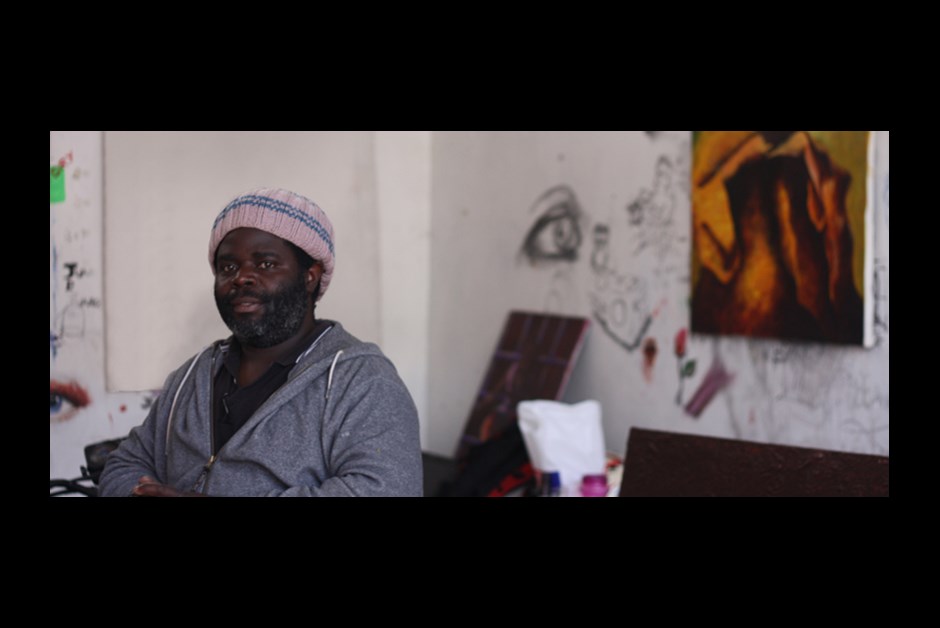Nairobi for Art Lovers
In Nairobi’s city square, an assembly of young hipsters in crew-neck sweaters and oversized glasses wave their hands toward the midday sun and sway along to the music of gospel-inspired rapper Astar. When he launches into his single Angel, the refrain rises from the crowd.
While tourists routinely fly into Nairobi en route to Kenya’s game reserves, most miss out on the music and art scene that defines this East African economic center. After a week chasing wildlife, I’ve come to Nairobi on a cultural safari where I discover artists and performers energized by global influences and a new sense of openness, the result of loosened censorship laws after the 24-year tenure of president Daniel arap Moi ended in 2002.
My first stop is the GoDown Arts Centre, a hub for Nairobi’s emerging talent. Located amid the tire factories in the city’s industrial area, it welcomes artists from all disciplines.
In the warehouse-performance space, I’m treated to a dance recital by the Kuruka Maïsha Foundation. Two rows of loose-limbed teenage boys, dressed in the red-hued robes of the Masai and wielding spears, perform a traditional tribal dance. With every step, they skillfully transfer their joy to the audience.
The foundation was established in 2002 as an arts school for Nairobi’s street kids to promote the idea that arts education can help boost self-esteem. The children take classes in drama, contemporary dance, acrobatics, juggling, music and capoeira – an Afro-Brazilian martial art.
After the recital, I pay an impromptu visit to painter Patrick Mukabi’s studio at GoDown. His portraits of African women, inspired by British painter Lucian Freud, celebrate voluptuous female figures in their everyday lives.
Mukabi recommends I next pay a visit to Kuona Trust (“Kuona” is Swahili for “seeing”). Owned by famed Kenyan writer Muthoni Likimani, the Trust is located in a converted house next to the Somali Embassy and other gated estates in the Upper Hill neighborhood. Art lovers can peer into the studios of some 30 artists, or step outside and watch them work under trees or in repurposed shipping containers.
During my visit, I check out the work of Cyrus Ng’ang’a, who uses found objects such as bottle tops, wire and sponges to create sculptures and other mixed-media art.
The Kuona Trust organizes local and international workshops, artist-led community outreach programs, residencies and exhibitions for artists like Ng’ang’a.
The director of the non-profit, Danda Jaroljmek, believes that contemporary Kenyan art is becoming more and more cosmopolitan and increasingly defined by a political consciousness. “There’s more freedom of speech these days,” says Jaroljmek, “so Kenyans are observing daily life in a more political way.”
The walls of the Trust are full of satirical pieces by artists like Bertiers, whose sculpture of Kenyan President Mwai Kibaki standing in front of a set of microphones is a comment on the violence that plagued the country following the 2007 national elections.
The next stop on my cultural crawl is Gallery Watatu in downtown Nairobi. Founded in 1968, the second-oldest private gallery on the continent features contemporary African art from Kenya, Uganda and Tanzania. It is home to the largest collection of work by Eduardo S. Tingatinga, whose bright, humorous, naïve and sometimes explicit paintings, created by layering bicycle paint on masonite, inspired a school of art named for the Tanzanian artist. While the compact size of Tingatinga paintings, which frequently depict wild fauna, was originally intended to appeal to tourists, the style long ago transcended these modest origins.
In the evening, I leave the visual arts behind to revel in Nairobi’s vibrant, well-supported and varied music scene. While benga (a type of guitar-based dance music, which might sound familiar to fans of U.S. indie band Vampire Weekend) is the best-known musical genre from Kenya, younger audiences are tuning in to genge: rap performed in a Swahili-English hybrid called sheng that takes on topics like slum life and poverty.
“It’s more issues-based than bling-bling,” notes Mike Strano, director of Kenya Music Week, who recommends WAPI, a monthly hip-hop series held at Sarakasi Dome, a movie theater converted into a performing-arts space.
But I’m in search of a mellower experience and I find it at Simba Saloon, a dance club in the Langata neighborhood. On stage, Afro-soul singer Kanjii Mbugua has the audience mesmerized. His voice reminds me of Usher, his swagger is like Kanye West, but the delectable mélange of urban and African sounds is postmarked direct from Nairobi.
